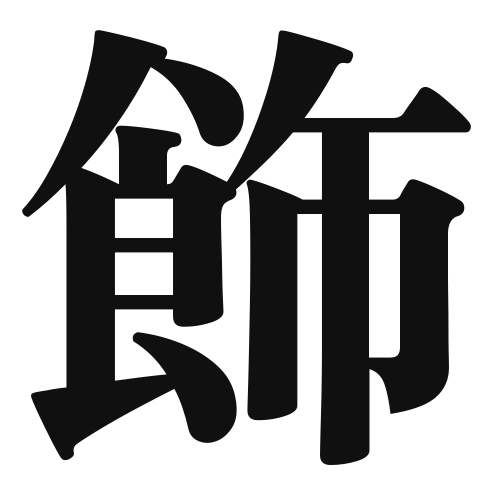1. Overview of Meaning
The kanji “飾” (shaku) means “to decorate” or “to adorn.” It refers to the act of embellishing something to enhance its appearance or beauty.
2. Formation and Radical
Formation of the Kanji: The kanji “飾” is a compound character (会意文字) that combines elements representing “food” (食) and “to make” (作), suggesting the idea of enhancing or beautifying something.
Radical: The radical for “飾” is “食” (shoku), which relates to food and consumption, indicating a connection to the idea of adornment in a more sensory context.
3. Examples of Usage
Common Words and Phrases:
- 飾り (かざり, kazari) – decoration
- 飾る (かざる, kazaru) – to decorate
Example Sentences in Daily Conversation:
- この部屋を飾りたいです。 (I want to decorate this room.)
- 彼女はクリスマスのために家を飾りました。 (She decorated the house for Christmas.)
4. Synonyms and Antonyms
Similar Kanji:
- 装 (そう, sou) – to adorn or dress up, often used in a more formal or elaborate context.
- 彩 (さい, sai) – to color or paint, focusing more on the aspect of adding color rather than decoration.
Antonyms:
- 剥 (はく, haku) – to strip or peel, indicating the removal of decoration or embellishment.
5. Cultural and Historical Background
Connection to Japanese Culture: In Japanese culture, decoration plays a significant role in various traditions, such as the decoration of homes during festivals and the use of ornamental items in ceremonies.
Proverbs and Idioms:
- 飾り立てる (かざりたてる, kazaritateru) – to overly embellish, often used to describe something that is excessively decorated.
